NOVA SCOTIA


ORIGIN OF PROVINCE NAME: The area was first called "Acadia" by French settlers and later "New Caledonia" (meaning "New Scotland" from the Latin name for northern Britain). The anglicized "Nova Scotia" name dates from 1621, when Sir William Alexander, a Scot, was given a charter to colonize the area.
NICKNAME: Bluenose Country or Canada's Ocean Playground.
CAPITAL: Halifax.
ENTERED CONFEDERATION: 1 July 1867.
SONG: "Farewell to Nova Scotia."
MOTTO: Munit hæc et altera vincit (One defends and the other conquers).
COAT OF ARMS: In the center, the provincial shield of arms displays (in a fashion similar to that of the provincial flag) the cross of St. Andrew, patron saint of Scotland, in blue on a white background. In the center of the cross are the Royal Arms of Scotland. Above the provincial shield is a royal helmet with a blue and silver scroll that represents the royal cloak. Two joined hands (one with a gauntlet and the other bare) are above the crest, supporting a branch of laurel which stands for peace and a branch of thistle representing Scotland. Above all, the provincial motto appears on a scroll. Supporting the shield are a white royal unicorn on the left representing England and an Aboriginal Canadian on the right holding an arrow. Beneath the shield is a grassy mound with mayflower entwined with the thistle of Scotland.
FLAG: The flag is based on the provincial shield of arms. It has a blue St. Andrew's Cross on a white field, with the Royal Arms of Scotland mounted at the center.
FLORAL EMBLEM: Trailing arbutus, also called mayflower.
TARTAN: Blue, white, green, red, and gold.
PROVINCIAL BIRD: Osprey.
TREE: Red spruce.
MINERAL: Stilbite.
GEMSTONE: Agate.
TIME: 8 AM AST = noon GMT.
1 LOCATION AND SIZE
Nova Scotia is one of Canada's Atlantic provinces and consists largely of a peninsula that is 360 miles (580 kilometers) in length. The peninsula is surrounded by four bodies of water—the Atlantic Ocean, the Bay of Fundy, the Northumberland Strait, and the Gulf of St. Lawrence. A narrow passage on the northwest (the Chignecto Isthmus) connects the province to New Brunswick. Its geographic location, together with large, ice-free, deepwater harbors, has been a key factor in the province's economic development.
With an area of 21,425 square miles (55,491 square kilometers), Nova Scotia is larger than Denmark, although somewhat smaller than Scotland, after which it is named. In size, it is the second smallest of the ten Canadian provinces. Its average width of 80 miles (128 kilometers) means that no part of the province is far from the sea. The highest point is North Barren Mountain, at 1,745 feet (531 meters) above sea level.
Nova Scotia Population Profile

| Estimated 2003 population | 936,000 |
| Population change, 1996–2001 | -0.1% |
| Percent Urban/Rural populations | |
| Urban | 55.8% |
| Rural | 44.2% |
| Foreign born population | 4.6% |
| Population by ethnicity | |
| Canadian | 425,880 |
| Scottish | 263,060 |
| English | 252,470 |
| Irish | 178,585 |
| French | 149,785 |
| German | 89,460 |
| Dutch (Netherlands) | 35,035 |
| North American Indian | 28,560 |
| Welsh | 12,245 |
| Italian | 11,240 |
| Acadian | 11,180 |
| Métis | 4,395 |


| City | Population, 2001 |
| Halifax (metro area) | 276,221 |
| Cape Breton-Sydney | 33,913 |
| Truro | 33,913 |
| Glace Bay | 21,187 |
| New Glasgow | 21,102 |
| Sydney Mines | 16,068 |
2 TOPOGRAPHY
The province is comprised of a peninsula, connected to the remainder of Canada by 17 miles (27 kilometers) of land, along with the island of Cape Breton (mainly highland country broken by lakes, rivers, and valleys), which is joined to the mainland by a 0.9-mile (1.4-kilometer) causeway. Nova Scotia is a mosaic of rugged headlands, tranquil harbors, and ocean beaches. Its indented shoreline stretches 6,478 miles (10,424 kilometers), while inland is a myriad of lakes and streams. The land is framed by the rocky Atlantic Uplands, the Cape Breton Highlands, and the wooded Cobequid Hills. The agricultural areas of Nova Scotia are predominantly lowlands. The northern coastal belt of low, level land stretches along the Northumberland Strait from the New Brunswick border to Cape Breton Island. When the glacial ice withdrew from coastal Nova Scotia 15,000 to 18,000 years ago, the ocean flooded ancient river valleys and carved out hundreds of small
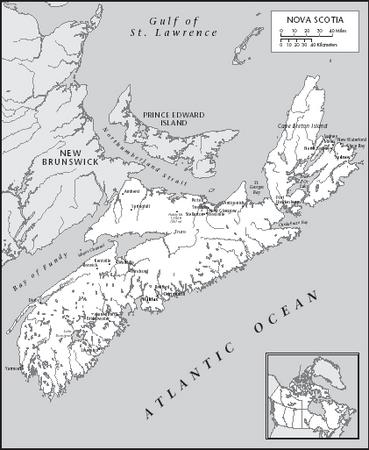
3 CLIMATE
Nova Scotia lies in the northern temperate zone and, although it is almost surrounded by water, the climate is classified modified continental rather than maritime. The temperature extremes of a continental climate, however, are moderated by the ocean. Because of cool currents of air and water from the Arctic alternating with warmer breezes from the Gulf Stream, extremes of summer and winter temperatures are not as evident as in central Canada. Average daily temperatures at the Halifax International Airport range from 21° F (-6° C ) to 65° F (18.2° C ) in July. The total average annual precipitation of 58.7 inches (1,490 millimeters) includes 107 inches (271 centimeters) of snowfall.
Only on rare occasions does the temperature rise above 90° F (32° C ) or fall below 14° F (-10° C ) in winter. The frost-free season ranges from 120 days in northern Nova Scotia to 145 days in the Annapolis Valley. The highest recorded temperature in Nova Scotia was 101° F (38.3° C ) on 19 August 1935 at Collegeville, and the lowest was -42° F (-41.1° C ) on 31 January 1920 at Upper Stewiacke.
4 PLANTS AND ANIMALS
Nova Scotia has more than 250 bird and mammal species. Deer, rabbit, pheasant, and ruffed grouse are prominent upland species, while beaver and waterfowl are common wetland species.
5 ENVIRONMENTAL PROTECTION
As in New Brunswick, the impact of drifting air pollution from industrial centers in the southeast (which results in acid rain falling in Nova Scotia and the other maritime provinces) is a local concern. Nova Scotia itself annually releases about 430,000 tons of nitrogen dioxide and carbon monoxide (gases that cause smog), 248,000 tons of sulfur dioxide and nitrogen oxide (gases that produce acid rain), and the equivalent of 4.7 million tons of carbon dioxide.
The Nova Scotia Environment Act became law in 1995. Due to the province's success in recycling under the act, 50 percent of Nova Scotia's solid waste was diverted from disposal sites by 2000. As of 2003, 99 percent of Nova Scotians had curbside recycling. From 1996 to 2003, 1.3 billion beverage containers had been recycled. Each year, 900,000 tires are reused or recycled. As of 2003, Nova Scotia had 18 municipal solid waste disposal sites. It was anticipated that the number of those sites would be reduced to seven by 2005.
Nova Scotia has more than 400 companies with 2,500 employees in the environmental sector. These firms work in such specialties as remote sensing, geographic information systems, waste utilization, and water and wastewater treatment products and services. Nova Scotia Power Inc. is a world leader in the clean burning of coal for electricity generation, and has been approached by several Caribbean
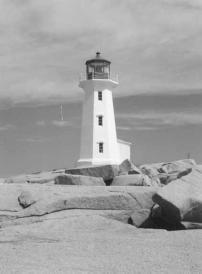
6 POPULATION
As of 2001, almost all of the 908,007 residents lived in close proximity to the coast. The largest concentration of population in 2001 was in Halifax, with a population of 276,221. The Cape Breton–Sydney municipality had a population of 33,913. The Halifax metropolitan area is the largest population area in Canada east of Québec City. Halifax functions as a regional headquarters for many government and private institutions. Major towns in Nova Scotia include Truro, Glace Bay, New Glasgow, Sydney Mines, New Waterford, Kentville, Amherst, Bridgewater, and Yarmouth.
Residential growth is about evenly split between urban and rural areas, but the farm population is diminishing. Nova Scotia has the lowest ratio of men to women. For every 100 women, there were 93.6 men in 2001. This was lower than the national average of 96.1 men.
Nova Scotia's population is aging. Between 1991 and 2001 the median age grew 5.4 years from 33.4 years to 38.8. The national average is 37.6.
7 ETHNIC GROUPS
Almost 80 percent of Nova Scotia's population trace their ancestry either wholly or partly to the British Isles. Those with French origin rank second: 16.7 percent of residents have some French ancestry. The next largest groups by ancestry are German and Dutch. Residents of Nova Scotia are also of Polish, Italian, Chinese, and Lebanese descent. Over 6,400 residents of the province have African origins. About 28,560 residents have Amerindian origins, and primarily belong to the Micmac Nation.
8 LANGUAGES
In 2001, English was the first language of 92.8 percent of Nova Scotians, with French the mother tongue of 3.8 percent of the province's residents. About 2.8 percent of residents speak both English and French.
9 RELIGIONS
Almost half of the population, or about 438,150 people, are Protestant, including members of the United Church of Canada, Anglicans, Baptists, Presbyterians, Lutherans, and Pentecostals. Nova Scotia also has about 328,700 Roman Catholics (36.6 percent of the population), about 3,580 people of Eastern Orthodox faith, 3,545 Muslims, 2,120 Jews, 1,730 Buddhists, and 1,235 Hindus. More than 106,400 provincial residents profess no religious affiliation.
10 TRANSPORTATION
Nova Scotia has a network of 438 miles (705 kilometers) of railroad track serving major communities in the province. Both the Dominion Atlantic Railway, a subsidiary of Canadian Pacific, and Canadian National operate in the province. Unit trains are used for rapid delivery of containers between the Port of Halifax and central Canada and the United States. Passenger rail service is provided by Via Rail from Halifax to Amherst and points west.
Nova Scotia has a network of 16,200 miles (26,000 kilometers) of highways, of which 8,400 miles (13,600 kilometers) are paved. During the 1980s a series of all-weather, controlled-access highways was constructed. The number of motor vehicles registered in 2003 was 551,670. There were also 1,841 buses registered, 6,826 motorcycles and mopeds registered, and 44,163 trailers registered. Urban transit consists of over 200 buses.
With a strategic location on the major North Atlantic shipping route, Nova Scotia's 129 commercial ports are able to serve the eastern Canadian and north-central US markets for shipments of goods to world markets. The port of Halifax is in the forefront of this activity, handling nearly 14 million tons of water-borne cargo in 2000. Other harbor facilities at Halifax include 35 deepwater berths and, located in Woodside, the largest automobile distribution center in Canada. The port at the Strait of Canso can accommodate the world's largest supertankers. Sydney Harbour also has a full range of facilities and can handle vessels up to 44,080 tons (40,000 metric tons).
National and regional air service is provided at Yarmouth, Sydney, and Halifax International Airport. Air Canada, Canadian International Airlines, KLM, Air Nova, Air Atlantic, and Northwest Airlink provide regular scheduled service to all Canadian points and international service to Boston, New York, Bermuda, London, Glasgow, and Amsterdam. Several local airports have been developed throughout the province for the use of charter services, local commuting, and flying clubs. In 2000, the Halifax International Airport handled 2.98 million passengers. The province's other main airport is at Sydney.
11 HISTORY
French Settlement
Nova Scotia, one of Canada's Maritime Provinces, is a peninsula that stretches off the eastern coast of Canada into the Atlantic Ocean. The Micmac Indians were
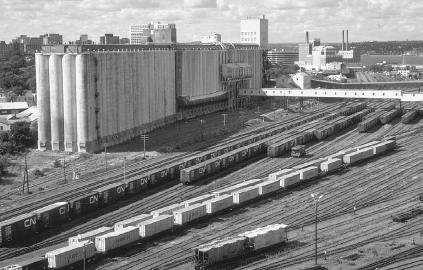
French settlements throughout Nova Scotia, as well as parts of Québec, New Brunswick and Maine (together known by the Micmac name "Acadia"), continued to develop throughout the 1600s. In the early 1700s, though, the English challenged French ownership of the province. England claimed that King James I had granted the province to Sir William Alexander back in 1621. King James named Nova Scotia "the Royal Province," and granted it a royal coat-of-arms. Control of the region passed back and forth between the British and French until 1713, when all of Acadia was given up to the British under the Treaty of Utrecht.
For a century, the French-speaking Acadians in Nova Scotia prospered in their trade with the New England states while England and France continued their battle for the territory. Britain was outraged when some Acadians refused to swear their allegiance to the British Crown. In 1755, these Acadians were deported (or sent away) to Louisiana and Virginia, an event immortalized in Henry Wadsworth Longfellow's poem "Evangeline."
Other Settlers Arrive
Germans and Yorkshiremen also formed settlements in Nova Scotia throughout the 1700s. Following the American Revolution, 25,000 Loyalists (colonists who sided with Great Britain during the war) arrived from the newly independent New England states. All of these Loyalists ended up doubling Nova Scotia's population, and in 1784, the area was partitioned to create the colonies of New Brunswick and Cape Breton Island. After the War of 1812, several thousand African Americans, including the Chesapeake Blacks, settled in the Halifax-Dartmouth area. Around the same time, the Highland Scots started to arrive; within 30 years 50,000 Highlanders settled on Cape Breton Island and in Pictou and Antigonish counties.
Tragedies Strike Nova Scotia
Nova Scotia was one of the four provinces that joined the Dominion of Canada in 1867. At that time, the province was a leader in international shipbuilding, the lumber industry, and fishing. The building of a railroad to Québec City opened the province to the interior of the continent. Economically, the region was doing very well: business was booming, and consumers were confident. But a series of accidents—some of which were related to the unpredictable weather in the Nova Scotia area—struck the province in the late nineteenth and early twentieth centuries, bringing economic advancement to a screeching halt.
It began on 25 August 1873, when a hurricane—then called "the Great Nova Scotia Cyclone"—swept across Cape Breton Island, killing 500 people and destroying 1,200 sailing vessels and more than 900 buildings. The tragic consequences of the hurricane resulted in the implementation of a better storm warning system in Nova Scotia. On 21 February 1891, a coal mine explosion at Springhill in Cumberland County killed at least 125 miners. Just seven years later, Nova Scotia was hit by the "Great November 1898 Gale." The steamer Portland sank off the coast of Yarmouth, making it one of about 3,000 vessels lost between Nova Scotia and New Jersey that day. All passengers onboard were lost, and no firsthand accounts of the sinking exist, so mystery and legends continue to surround the Portland 's disappearance to this day. Fourteen years later, in 1912, another tragedy of unbelievable proportions struck Nova Scotia: the Titanic sank in the North Atlantic Ocean. Many officials in the capital city of Halifax played a central role in the rescue efforts and were involved in the identification and burial of the victims recovered from the ocean.
The port of Halifax played an important part in the Allied victory in World War I (1914–18). Halifax served as a major military port, sending supplies and troops across the Atlantic to Europe. During the war it was one of the world's busiest and congested ports. A 1917 collision between a French arms ship and a Belgian vessel highlighted the dangers of such congestion: the resulting explosion completely destroyed the north end of Halifax.
Economic Ups and Downs
Canada experienced losses of over 68,000 soldiers in World War I, and when the war was over, Nova Scotians faced a bleak future. Jobs were scarce and low-paying, and tariffs (taxes) on imports kept prices for consumer goods high. Over the course of the 1920s, though, Canada as a whole experienced a period of rapid industrialization. Improvements to railways and roads enabled commercial opportunities to flourish. Automobiles, telephones, electrical appliances, and other consumer goods became widely available. As in the United States, consumer confidence led to the rapid expansion of credit and greater business opportunities. In Nova Scotia, electric companies in particular were developing at a great rate in the 1920s. The leaders in the field at that time were Stiver's Falls Hydroelectric Plant, Paradise West Electric Light Company Limited, and Western Nova Scotia Electric Company.
But the good times were cut short with the onset of the Great Depression, a period of severe economic slowdown that began in 1929. The interior of Canada was hit particularly hard because the country relied so heavily on agriculture. Low grain prices, droughts, and frequent crop failures further devastated the national economy. Social welfare programs were rapidly expanded during the 1930s to help the poor and the unemployed throughout Canada.
World War II (1939–45) brought both the United States and Canada out of the Depression. Halifax became a major military port and saw heavy convoy traffic. The city was also a major military training centre. Almost 24,000 military personnel were stationed there by May of 1945. With the withdrawal of much of the army at the end of the war, Halifax branched out into nonmilitary industries. When the Angus L. Macdonald Bridge opened in 1955, the city experienced rapid expansion. The 1950s also brought advances in communication with broadcasting improvements at CBHT, Halifax's first television station.
In 1962, the Bedford Institute of Oceanography, Canada's largest federal research centre for oceanography, was founded. But the 1960s also brought the demise of an important community in Halifax. In 1969, Africville, home to a number of black families for more than 100 years, was dismantled by the Halifax government. The plan to take the land away from its residents was met with opposition, but in the end the city won out and the community was wiped out.
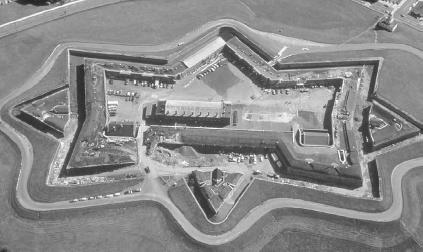
Recent Years
Nova Scotia has seen other tragic events in more recent years. In May of 1992, the Westray coal mine in the village of Plymouth, Pictou County, exploded. Every miner working underground that day—26 in all—was killed. The mine never reopened. In September of 1998, tragedy struck again when Swissair Flight 111 crashed into the ocean off the Nova Scotia coast. There were no survivors. En route from New York to Geneva, Switzerland, the aircraft was attempting an emergency landing when it crashed near Peggy's Cove. The people of Nova Scotia played a key role in the recovery effort that followed.
On a happier note, the province of Nova Scotia became the center of international attention in 1995, when leaders from around the world gathered in Halifax for the 21st Summit of the "Group of Seven." In 1997, the 500th anniversary of John Cabot's voyage to Nova Scotia was commemorated with the reconstruction of the historic ship Matthew.
In 1999, a Canadian Supreme Court ruling declared that same-sex couples were entitled to the same benefits and obligations as opposite-sex couples in long-term relationships that the government recognizes as "common law" marriages. The Nova Scotia legislature later amended its civil code to mandate equal treatment for same-sex partners.
12 PROVINCIAL GOVERNMENT
The government of Nova Scotia consists of a 52-member elected House of Assembly and Lieutenant Governor who is the Queen's representative in the province. The lieutenant governor is appointed by the Governor General on the advice of the federal cabinet, acting on recommendation of the prime minister. The House of Assembly is elected by the people of Nova Scotia for a term of five years. It may be dissolved, however, at any time by the lieutenant governor on the advice of the premier of the province. Ministers of the Executive Council, or Cabinet, are selected by the premier from elected representatives of the majority party.
13 POLITICAL PARTIES
Political parties first appeared in Nova Scotia in the 1830s. The Liberal Party was in the minority from 1836 to 1867 and was primarily against entry into the confederation. After 1867, however, it became the majority party and held power until 1956 (with brief interruptions in 1878, 1925, and 1928). After 1956, the Conservative Party took the majority until the 1970s.
The last general election was held on 5 August 2003. The parties held the following number of seats in Nova Scotia's House of Assembly as of 2003 (after the election): Progressive Conservatives, 25; Liberals, 12; and New Democrats, 15.

| Term | Premier | Party |
| 1867 | Hiram Blanchard | Liberal |
| 1867–75 | William Annand | Anti-Confederation |
| 1875–78 | Philip Carteret Hill | Liberal |
| 1878–82 | Simon Hugh Holmes | Conservative |
| 1882 | John Sparrow David Thompson | Conservative |
| 1882–84 | William Thomas Pipes | Liberal |
| 1884–96 | William Stevens Fielding | Liberal |
| 1896–1923 | George Henry Murray | Liberal |
| 1923–25 | Ernest Howard Armstrong | Liberal |
| 1925–30 | Edgar Nelson Rhodes | Conservative |
| 1930–33 | Gordon Sydney Harrington | Conservative |
| 1933–40 | Angus Lewis MacDonald | Liberal |
| 1940–45 | Alexander Stirling MacMillan | Liberal |
| 1945–54 | Angus Lewis Macdonald | Liberal |
| 1954 | Harold Joseph Connolly | Liberal |
| 1954–56 | Henry Davies Hicks | Liberal |
| 1956–67 | Robert Lorne Stanfield | Conservative |
| 1967–70 | George Isaac Smith | Conservative |
| 1970–78 | Gerald Augustine Regan | Liberal |
| 1978–90 | John MacLennan Buchanan | Conservative |
| 1990–91 | Roger Stuart Bacon | Conservative |
| 1991–93 | Donald William Cameron | Conservative |
| 1993–97 | John Patrick Savage | Liberal |
| 1997–99 | Russell MacLellan | Liberal |
| 1999– | Dr. John Hamm | Conservative |
14 LOCAL GOVERNMENT
Nova Scotia consists of 18 counties, of which 12 are separate municipalities and the other 6 are each separated into two districts. The 24 rural municipalities contain 39 incorporated towns and 3 cities. Towns must have a population of at least 1,500 in an area of less than 640 acres (1 square mile). In total, there are 66 municipal units in Nova Scotia—cities, towns, and rural municipalities—which have local governments with powers to enact bylaws governing such matters as zoning and planning.
15 JUDICIAL SYSTEM
The Canadian Constitution grants provincial jurisdiction over the administration of justice, and allows each province to organize its own court system and police forces. The federal government has exclusive domain over cases involving trade and commerce, banking, bankruptcy, and criminal law. The Federal Court of Canada has both trial and appellate divisions for federal cases. The nine-judge Supreme Court of Canada is an appellate court that determines the constitutionality of both federal and provincial statutes. The Tax Court of Canada hears appeals of taxpayers against assessments by Revenue Canada.
The provincial court system consists of a Provincial Court, where most criminal matters are heard; the Supreme Court of Nova Scotia, which is the highest trial court in Nova Scotia, hearing serious criminal and civil cases; and the Court of Appeal, the province's highest court, which hears appeals from the Provincial Court and the Supreme Court of Nova Scotia. In addition to these three main courts, there is a family court, a small claims court, a bankruptcy court, and probate courts in each of Nova Scotia's districts, which deal with estates.
In 2002, there were 9 homicides in Nova Scotia. That year, there were 1,099 violent crimes per 100,000 persons, and 3,322 property crimes per 100,000 persons.
16 MIGRATION
The Micmac tribe inhabited Nova Scotia long before the first explorers arrived from Europe. In the 17th century, all of Nova Scotia (as well as parts of Québec, New Brunswick, and Maine, which made up an area known as Acadia) was settled by the French. In the next century, migration involved the forced deportations of Acadians (the descendants of the original French settlers) and their return, as well as an influx of British Loyalists from the American colonies following the American Revolution (1775–83). More recent immigrants to Nova Scotia in the 19th and 20th centuries included African, Asian and eastern European groups. International migration, on a net basis, has not made a significant contribution to population change since the 1960s.
In 2001, 26.1 percent of the 41,315 immigrants living in Nova Scotia had come from the United Kingdom, 19.5 percent from the United States, 15.3 percent from Northern and Western European countries other than the United Kingdom (mostly from Germany and the Netherlands), and 9.5 percent from West Central Asia and the Middle East. Many immigrants in recent years have come from Kuwait and India.
In 2001, 1.1 percent of Nova Scotia's residents age 5 and older were living abroad. Some 6.6 percent were living elsewhere in Nova Scotia, while 6.2 percent were living in another province. Ontario is the leading province of origin and destination for interprovincial migration.
17 ECONOMY
Nova Scotia's economy is highly diversified. It has expanded from resource-based employment in agriculture, forestry, fishing, and mining to include many types of manufactured goods as well as business and personal services. In 2002, Nova Scotia's gross domestic product (GDP) totaled C $27.1 billion, or 2.3 percent of the national total.
18 INCOME
The highest average weekly wages are in the mining sector, followed by public administration, utilities, and goods-producing industries. The average family income was C $56,226 a year in 2000 for a family of five.
19 INDUSTRY
In 2001, the leading manufacturing industries in Nova Scotia according to the value of shipments were: food products (including the important fish processing sector), C $2.19 billion; pulp and paper products, C $1.07 billion; plastic and rubber products, C $1.07 billion; transportation equipment, C $665 million; wood products, C $481 million; fabricated metal products, C $225 million; and beverage and tobacco products, C $210 million. The value of manufactured shipments for Nova Scotia in 2002 was C $8.6 billion.
20 LABOR
In 2003, the total labor force was about 481,300 persons, of whom 434,600 were employed. There were 46,700 persons unemployed, for an unemployment rate of 9.7 percent. The hourly minimum wage as of January 2004 was C $6.25.
In 2003, the sectors with the largest numbers of employed persons were: trade, 72,900; health care and social services, 53,600; manufacturing, 46,400; educational services, 33,600; accommodation and food services, 29,400; public administration, 29,300; construction, 27,000; management, administrative, and other support, 23,800; transportation and warehousing, 20,700; finance, insurance, real estate and leasing, 19,700; professional, scientific, and technical services, 19,500; information, culture, and recreation, 19,200; other services, 18,500; forestry, fishing, mining, and oil and gas, 13,200; agriculture, 6,300; and utilities, 2,300.
21 AGRICULTURE
There were 3,923 farms in Nova Scotia in 2001. Total farm area was 1.01 million acres (407,046 hectares), with 294,602 acres (119,219 hectares) of land area under crops. Farm cash receipts in 2000 totaled C $460.4 million (excluding forest products sold). Farmers' operating expenses equaled C $388.7 million. The average farmer had C $17,933 before interest payments and taxes.
Nova Scotia has a highly specialized commercial agriculture sector dominated by horticultural crops. Export items include blueberries, apples, strawberries, processed fruits, vegetables, and juices. A wide variety of vegetables are produced, with potatoes the most important one. Other important vegetables are carrots, green or wax beans, and green peas. Pears and tobacco are also commercially grown. Hay is the most important field crop.
Greenhouse operations cover over 3 million square feet (282,472 square meters), and primarily produce vegetables, flowers, and ornamental shrubs. There were 23 farms producing organic products in 2001. Production of maple syrup has an annual value of approximately C $1 million.
22 DOMESTICATED ANIMALS
More than 2,300 farms raise cattle in Nova Scotia, but they provide only a quarter of the beef consumed in the province. In 2001, there were 108,401 cattle on provincial farms, 124,935 hogs, and 24,896 sheep. In 2003, livestock receipts amounted to C $277.4 million.
The poultry population in 2003 was 942,017. There were 81 chicken producers, 25 egg producers, and 21 turkey producers.
Fur products include ranch mink and fox and wild muskrat, mink, and beaver.
23 FISHING
Fishing resources, particularly cod, have been hit by dwindling stocks in recent years. As a result, quotas are affecting those who make their living from fishing. Products of the sea include shellfish, such as lobster, deep-sea crab, and scallops; groundfish, such as cod, haddock, and halibut; and estuarial species, such as herring and mackerel. Nova Scotia leads the provinces in total volume and value of commercial landings. Fish farm production centers primarily on salmon and steelhead. In 2003, a total of 143,465 tons of fish and shellfish, valued at C $1.2 billion, were exported from Nova Scotia.
In 2000, Nova Scotia had 56,110 resident anglers actively engaged in sport fishing within the province's waters.
24 FORESTRY
With 73.5 percent of the provincial land area covered by forest, forestry is of paramount importance to Nova Scotia. Total productive forest land in Nova Scotia exceeds 9.9 million acres (4 million hectares). Only 28 percent of this area is provincial Crown land, and a further 3 percent is under federal ownership; 69 percent of forest land is in the hands of a large number of private owners.
Predominant species include such softwoods as spruce, fir, and white pine, and such hardwoods as red maple, sugar maple, and yellow birch. In 2000, the total timber harvest was 218.9 million cubic feet (6.2 million cubic meters). Forest products take the form of pulp, newsprint paper, paperboard, hardboard, lumber, pulpwood, and Christmas trees. In 2000, forestry directly employed 11,700 persons.
Each year, Nova Scotia produces about 1.7 million Christmas trees, covering 28,617 acres (11,581 hectares).
25 MINING
In 2001, average weekly earnings in the mining industry in Nova Scotia were C $1,000 per week. This was one of the highest earning levels in the province. The earliest gypsum mining operations in Nova Scotia recorded by settlers date back to 1779. In 2002, Nova Scotia produced more than 83 percent of Canada's gypsum from quarries located in Cape Breton and central Nova Scotia. The principal markets for gypsum are the New England and south Atlantic states of the United States, where it is primarily used in the production of wallboard, with other markets in central Canada and many foreign countries. The province also has major deposits of salt and limestone. The estimated value
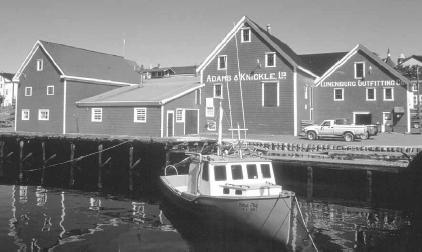
26 ENERGY AND POWER
Canada's first coal mine began operating in 1720 on the north side of Cow Bay at Cape Breton, Nova Scotia. Coal production was valued at C $53.6 million in 2001. The largest coal reserves are near Sydney. Substantial reserves of fuel-grade peat also exist in several southwestern counties.
Development of the Cohasset Panuke oilfield, to the southwest of Sable Island, began in 1990, with production starting in 1992. Substantial gas reserves have been discovered off the coast of Nova Scotia. The Sable Island natural gas project includes three fields—Thebauld, Venture, and North Triumph—but is expected to expand to six fields. The Sable project yielded 200 billion cubic feet of natural gas in 2002. The value of petroleum production in 2001 was C $150.7 million. The value of natural gas production in 2001 was C $972.1 million.
Nova Scotia Power Inc. (NSPI) is responsible for generating and distributing electricity. During the 1980s, NSPI adopted an operating plan based on conversion to coal generation from imported oil. By 1992 the dependence on oil-fired generation was cut to less than 25 percent. In December 2001, Nova Scotia released a new energy strategy. It was designed to allow for the gradual introduction of competition in the industry. The plan also called for the development of renewable energy sources, reduction of emissions, and the development of clean coal technologies.
The concept of using tides to generate electricity was first proposed in the late 1800s. With the opening of the Annapolis Tidal Generating Station at the mouth of the Annapolis River in 1984, this goal became a reality. It was built as a small-scale tidal project to test and evaluate the potential of the Straflo turbine for possible future use within a massive tidal project on the Minas Basin.
27 COMMERCE
In 2002, total merchandise exports in Nova Scotia amounted to C $5.34 billion and imports totaled C $5.14 billion. The United States is the major export market (81.5 percent of all exports), followed by Japan, France, the United Kingdom, and China. Germany is Nova Scotia's main import supplier (31.7 percent of all imports), followed by the United Kingdom, the United States, Norway, and Cuba.
More than half of Nova Scotia's exports consist of products of the forest and the sea. Exports of food products are largely in the form of fish, bakery, and dairy products, fruits and fruit preparations, fish meal, and feed. Fabricated materials—primarily paper and paper-board, wood pulp, industrial oils and chemicals, metals and metal-fabricated basic products, and wood-fabricated materials—are the next most significant group of goods exported.
28 PUBLIC FINANCE
The fiscal year runs from 1 April to 31 March. For fiscal year 2002/03, total revenues were estimated at C $5.36 billion; expenditures totaled C $5.34 billion. The largest expenditure areas were health, education, interest on debt, transportation and communication, social services, and resource development. In the 2003/04 fiscal year, provincial debt was estimated at C $11.7 billion. The debt to gross domestic product (GDP) ratio was 41 percent.
29 TAXATION
Taxation rates for provincial residents include a retail sales tax of 8 percent to cover most physician and hospital costs. Major consumption taxes are levied on gasoline ( C $0.155 per liter) and tobacco ( C $26.04 per carton). The basic personal income tax rate for Nova Scotia residents was 45.2 percent in 2003. The general corporation tax is 16 percent, and 5 percent for small businesses. The capital tax rate ranges from 0.25 to 3 percent.
The average family of four (two parents and two children) in 2003 earned C $71,269. Such a family paid C $33,123 in taxes.
30 HEALTH
The number of births in the province was 8,909 in 2001, a decrease of 2.3 percent from 2000. Deaths totaled 7,879, which was equal to the number of deaths in
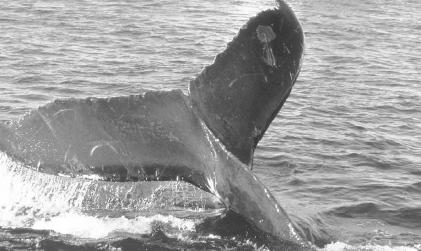
Hospitals and maternity wards are provided to communities throughout the province, with regional hospitals providing some of the more specialized requirements. Nova Scotia has over 50 hospitals and health centers. The Victoria General Hospital in Halifax is the overall referral hospital for the province and, in many instances, for the Atlantic Region. The Izaak Walton Killam Hospital provides similar regional specialization for children. Psychiatric facilities are available in Dartmouth and Sydney.
31 HOUSING
There were 360,020 households in Nova Scotia in 2001. The average household size was 2.5 persons. There were 246,440 households living in single-detached houses, 13,370 households living in apartments in buildings with five or more stories, 13,345 households living in mobile homes, and 86,875 households living in other dwellings, including row houses and apartments in buildings with fewer than five stories. In 2002, C $1.3 billion was invested in residential construction.
32 EDUCATION
Elementary and secondary schools offer free instruction from primary through grade 12. School attendance is compulsory from 6 to 16 years of age. During the 2000/01 academic year 161,530 students were enrolled in elementary, junior high, and senior high schools. In 1999/2000, there were 9,834 full-time elementary and secondary school teachers, with 15.3 students per teacher.
Eleven regional vocational schools, the Institute of Technology, the Adult Vocational Training Campuses in Dartmouth and Sydney, the Nautical Institute in Port Hawkesbury, and the College of Geographic Sciences in Lawrencetown have been integrated into the Nova Scotia Community College system, which enrolls nearly 4,000 full-time and 12,000 part-time students annually.
Halifax is the center for several universities, including Dalhousie, Saint Mary's, Mount Saint Vincent, King's College, and the Technical University of Nova Scotia. The Technical University provides bachelor's and master's degrees in engineering and architecture and a doctorate degree in engineering. Other facilities in the Halifax metro area include the Nova Scotia College of Art and Design, the Atlantic School of Theology, and the Maritime School of Social Work. Other areas of the province are served by Université Ste. Anne at Church Point, Acadia University in Wolfville, St. Francis Xavier in Antigonish, and the University College of Cape Breton in Sydney. Other specialized facilities throughout the province include the Cox Institute of Agricultural Technology, the Nova Scotia Agricultural College, and the Nova Scotia Teachers College, all in Truro, and the Coast Guard College at Point Edward.
33 ARTS
The Rebecca Cohn Auditorium in Halifax is center stage for Symphony Nova Scotia and other musical and theatrical performances. The Neptune Theatre provides professional repertory theater in Halifax. Art galleries are found throughout the province, and the Art Gallery of Nova Scotia has renovated a historic building for its new headquarters. The site is close to the Nova Scotia College of Art and Design in downtown Halifax. In 2000/01, per capita provincial spending on the arts was C $64.
34 LIBRARIES AND MUSEUMS
Public library services are provided by a number of regional library systems. The largest is the Halifax Regional Library, with 13 branch locations. The Nova Scotia Museum is a group of 25 museums, including Balmoral Grist Mill (Balmoral Mills); Barrington Woolen Mill (Barrington); Maritime Museum of the Atlantic and the Nova Scotia Museum of Natural History (both in Halifax); Ross Farm Museum (New Ross); Sherbrooke Village (Sherbrooke), and many more.
35 COMMUNICATIONS
All local telephone service in Nova Scotia is provided by Maritime Telegraph and Telephone, which is a private company. Long distance service is offered by both Maritime and other companies. Nova Scotia had 11 AM and 8 FM radio stations. Both Canadian Television (CTV) and the Canadian Broadcasting Corporation (CBC) operate television stations in Halifax and Sydney.
36 PRESS
Halifax has three daily newspapers: The Chronicle-Herald , The Mail-Star , and The Daily News . Other daily papers are published in Sydney, Amherst, Dartmouth, New Glasgow, and Truro.
37 TOURISM, TRAVEL, AND RECREATION
Recreational activities in Nova Scotia are often centered on the seacoast because of its proximity to most of the population. While the water is on the cool side along the Atlantic coast, the beaches on the Northumberland Strait enjoy some of the warmest waters north of the Gulf of Mexico. Kejimkujik National Park and Cape Breton Highlands National Park are administered by the federal government, while smaller provincial parks are located throughout the province.
Tourism is an important sector in the provincial economy. Total tourism receipts exceeded C $1.2 billion in 2001, and about 33,500 were employed in the many aspects of the industry. More than 2.14 million people visit the province each year, with about 16.7 percent of these coming from outside Canada.
Festivals, exhibitions, and various other celebrations throughout the province attract both residents and tourists. A few of the most notable events include the Annapolis Valley Apple Blossom Festival, the Antigonish Highland Games, the Nova Scotia Provincial Exhibition, the Joseph Howe Festival, the Nova Scotia Fisheries Exhibition and Fishermen's Reunion, and the Buskers Festival. Halifax is also host to the Nova Scotia International Tattoo (a military drill held outdoors to music) in late June.
38 SPORTS
Sailing, wind surfing, and canoeing are all enjoyed extensively throughout the province. In winter the lakes become a skater's paradise, and the hills and mountains of areas such as Martock, Cape Smokey, and Wentworth attract downhill skiers. Virtually all towns and many smaller communities have arenas, bowling alleys, gymnasiums, tennis courts, baseball diamonds, playing fields, and curling rinks (curling is a game imported from Scotland in which large rounded stones with attached handles are slid down an ice-covered playing area toward a circular target). Golf courses abound and are available within short distances of all communities.
Spectator sports are available in the major towns, with the Halifax Metro Centre Stadium attracting professional sporting and other touring entertainment events.
39 FAMOUS NOVA SCOTIANS
Nova Scotia was the birthplace of three Canadian prime ministers: Sir John Thompson (1845–94), Sir Charles Tupper (1821–1915), and Sir Robert Borden (1854–1937).
Famous Nova Scotian entertainers include actress Joanna Shimkus (b.1943) and singers Clarence Eugene "Hank" Snow (1914-99), Anne Murray (b.1945), and Carole Baker (b.1949).
Noted novelists born in Nova Scotia include Hugh MacLennan (1907–90), Alden Nowlen (1933–83), and Joan Clark (b.1934).
40 BIBLIOGRAPHY
LeVert, Suzanne. Nova Scotia . Philadelpha: Chelsea House, 2001.
Norman, Howard A. My Famous Evening: Nova Scotia Sojourns, Diaries, and Preoccupations. Washington, DC: National Geographic, 2004.
Sorensen, Lynda. Canada: Provinces and Territories . Vero Beach, FL: Rourke Book Co., 1995.
Thompson, Alexa. Nova Scotia . Minneapolis: Lerner Publications, 1995.
Weihs, Jean. Facts about Canada, Its Provinces and Territories . New York: H. W. Wilson, 1995.
Web sites
Nova Scotia Government. http://www.gov.ns.ca (accessed on March 22, 2004).
Statistics Canada. http://www.statcan.ca (accessed on March 22, 2004).
Travel Canada: Nova Scotia. http://www.travelcanada.ca/tc_redesign/app/en/ca/destinations.do?provinceId=8l (accessed on May 2, 2001).
regards from Halifax
did it have a name or what info can you give me. I walked
from our house (after the roof blew off) 2 miles. any help would
be a help.
One point in section twenty.
In the English (and Canadian English) dictionary there is a "u" in Labour.
Labor is the USA American spelling.
great information